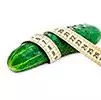Asp
Asp is a predatory commercial fish from the carp family. The fish is also known as sheresper, red-lipped asp, Aral asp. This predator lives exclusively in large and medium-sized rivers included in the basins of the Azov, Black, Caspian and Baltic seas.
The ratio of BJU in the product

Source: depositphotos.com How to burn 99 kcal?
| Walking | 25 minutes |
| Jogging | 11 minutes |
| Swimming | 8 minutes |
| A bike | 14 minutes |
| Aerobics | 20 minutes. |
| Household chores | 33 minutes |
The average length of the asp is about fifty centimeters, and the average weight is about three kilograms. Although sometimes there are specimens of 12-15 kg. There are many types of asp - flat-headed, Western Asia, Ural and others. The asp differs from other fishes in its elongated spindle-shaped body, as well as in a rather large mouth, with a slightly protruding lower jaw.
This predator is characterized by a silvery color with a white belly and a bluish-gray back. The caudal and dorsal fins are gray with a black border, while the lateral and lower fins have a subtle reddish tint.
By its nature, the asp is considered a sedentary fish; it does not make large migrations. However, fish habitats change throughout the year. In winter, it does not feed and lives in deep pits; in spring, after spawning, it rests for about a month at an average depth with a moderate current. In summer, he prefers to dwell in shallow rapids and rifts.
Asp is extremely careful and sensitive. Among all predators, this fish is the most cautious and shy, however, at the same time, it is quite active and aggressive. He hunts exclusively during the day, and eats several times a day. Large asp most often leads a solitary lifestyle. In summer, this predator can gather in large flocks and attack the fry of bream and roach. He suddenly bursts out of cover and stuns his victim with the blows of a very powerful tail. The fish also feeds on various insects, crayfish and frogs.
He reaches puberty by about four to five years.
The fish is valued quite highly because of the rapid growth and excellent taste of its meat.
Composition and calorie content of asp
The chemical composition of the flesh of this fish mainly depends on its habitat. One hundred grams of pulp contains 19 g of protein, 2.60 fats, 100 mg of sodium, 265 mg of potassium, 30 mg of calcium, 35 mg of magnesium, 220 mg of phosphorus, 0.60 mg of iron.
100 g of the product contains 0.02 mg of vitamin A, 0.02 mg of vitamin B1, 0.06 mg of vitamin B2, 1 mg of vitamin PP, 1 mg of ascorbic acid.
The calorie content of asp is relatively low - about 99 kcal per 100 g of pulp.
Useful properties of asp
The relatively low calorie content of asp and a large amount of vitamins allow the meat of this fish to be included in the dietary menu.
The pulp of this fish is very healthy and surprisingly tasty. It contains a significant amount of ascorbic acid (vitamin C). And vitamin C is known to be one of the most powerful natural antioxidants. In addition, it influences blood clotting and capillary permeability, is involved in the synthesis of hormones, and also has antibacterial and anti-inflammatory effects. Ascorbic acid reduces allergic reactions and increases overall body resistance. Thanks to this vitamin, toxic components are removed from the human body more efficiently and faster, and nutrients are better absorbed.
Vitamin A regulates metabolism, improves vision and skin condition.
Nicotinic acid (vitamin PP) participates in redox processes, improves blood circulation in small vessels, removes harmful toxins from the body, and also takes part in the synthesis of hormones.
Vitamin B1

(thiamine) accelerates the healing of wounds, cuts, burns. It is indispensable for severe emotional stress, shortness of breath, tachycardia, atonic constipation.
The phosphorus and calcium found in asp pulp play an important role in the formation of the skeleton. Sodium prevents nervous stress, normalizes muscle activity. Potassium is essential for the normal functioning of the cardiovascular system.
Ways to use asp
Culinary experts fried, stewed, baked, salted, smoked this fish, and also cook minced fish from the pulp. Asp fish soup cooked over a fire in a pot is especially tasty.
Excessive bony is the only drawback of this predator's meat. You can get rid of sharp and small bones by smoking or drying fish. Asp in salted form has excellent taste, and under the influence of salt, the bones become soft and practically not felt during eating. The balyk made from asp does not differ in its taste from the salmon balyk.
Asp caviar also has commercial and nutritional value. It has an excellent delicate taste, beautiful amber color, and contains many components valuable for the human body. Fish caviar can be consumed freshly prepared.
YouTube video related to the article:
Found a mistake in the text? Select it and press Ctrl + Enter.







